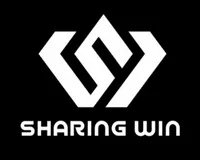The Nano V3.0 is an ultra-compact development board based on open-source hardware. Compared to the earlier USB-based Arduino Diecimila, the Arduino Nano offers significant advantages in terms of size while retaining full functionality.
This board is ideal for creating interactive electronic devices that operate independently, as well as for projects requiring a connection to a computer. It seamlessly integrates with software platforms such as Flash, Processing, Max/MSP, Pure Data (PD), and VVVV, making it a powerful tool for interactive art, real-time data processing, and multimedia applications.
Equipped with ample I/O options, the Nano is versatile and suitable for a variety of projects, from simple sensor-based tasks to complex control systems. Its small size and USB-powered design make it particularly useful for prototyping and embedding in space-constrained devices.
Feature
- 14 Digital I/O Pins: Includes TX, RX, and D2~D13 for versatile control and communication.
- 8 Analog Input Pins: Ranges from A0 to A7 for analog signal reading.
- 1 TTL Serial Port: Includes RX/TX for serial communication.
- 6 PWM Pins: Available on D3, D5, D6, D9, D10, and D11 for pulse-width modulation.
- ATmega328P-AU Microcontroller: Powered by the reliable Atmel ATmega328P-AU chip.
- USB Support: Enables program uploading and power supply via USB connection.
- External Power Support: Compatible with 5V~12V DC power sources.
- 9V Battery Support: Allows convenient mobile power supply with a 9V battery.
- ISP Support: Allows in-system programming (ISP) for firmware updates.
- Three Power Options: USB, VIN, or external 5V input.
- Compact Dimensions: Measures just 18mm x 43mm, perfect for space-constrained
Learn
- Download the Arduino IDE
Official download link: Arduino IDE Software - Download the USB Chip Driver
- For general users: Driver Download
- For international users: Driver Download (WCH)
- Connect the Nano Board
Plug in the Nano development board, and the driver will install automatically. - Select the Nano Board in the IDE
Open the Arduino IDE and choose Board: Arduino Nano from the tools menu. - Select the COM Port
Identify the COM port in your computer’s device manager, corresponding to the connected Nano board. - Upload Example Code
Use one of the example sketches provided by the Arduino IDE and upload it to the board.
For macOS Users:
Apple’s official discussion forum provides solutions for USB driver issues:
Apple Discussion Forum
Alternatively, you can find updated macOS drivers for CH340G chips on GitHub:
GitHub – Mac OS X CH340 Driver



Reviews
There are no reviews yet.